Hot Tub Setup Guide: Create Your Relaxation Oasis
November 05th, 2024
November 05th, 2024
A hot tub isn't just an outdoor amenity; it's a gateway to relaxation, a sanctuary where the day's stress melts away. Setting up this oasis might seem daunting, but with a touch of guidance, you'll soon be enjoying the soothing embrace of warm bubbles. I recall the first time I helped a friend set up their hot tub—what began as a daunting task quickly became an adventure filled with laughter and camaraderie. There's a unique satisfaction in preparing something that promises so much comfort and joy.
Before diving into the steps, understanding the nuances of hot tub installation is crucial. It's not merely about filling it with water and flipping a switch. Consider the site where it will reside, the water chemistry that needs adjusting, and the regular maintenance that ensures longevity and cleanliness. Each decision, from choosing the right location to selecting the appropriate chemicals, plays a pivotal role in crafting the perfect experience.
This guide will walk you through the process with ease and simplicity, breaking it down into manageable steps. Whether you're setting it up for the first time or simply need a refresher, these instructions aim to equip you with everything necessary. Soon, you'll be soaking in your tub, enveloped by warmth, grateful for the effort invested in perfect preparation.
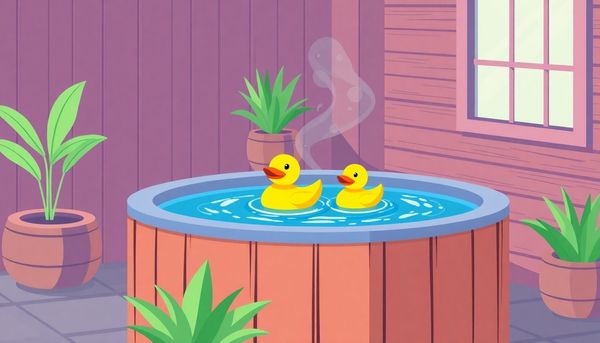
Before immersing yourself in a rejuvenating hot tub session, ensuring a pristine and safe water environment is essential. Whether your tub is fresh out of the box or has been hibernating for months, the initial cleaning process is a critical step that can't be overlooked.
Begin by addressing any antifreeze remnants that may have been added during shipping. Filling the footwell with water and running the pumps for a few minutes will help flush out these unwanted chemicals. Afterward, drain the tub completely to ensure no residue remains. For tubs that have sat unused, a thorough cleansing becomes even more crucial. Stagnant water can harbor bacteria, turning what should be a relaxing retreat into a potential health hazard.
Once drained, attention shifts to the tub’s shell and cover. Employ a non-abrasive cleaner and a soft cloth to scrub all surfaces, taking care to rinse thoroughly. This prevents any foaming when you eventually fill the tub with new water.
Your filters deserve equal attention. Replace or clean them, ensuring they're free from debris. A dirty filter can compromise water clarity and system efficiency. If a deep clean is needed, an overnight chemical soak can work wonders.
Finally, as you prepare to refill, reconnect any drain plugs or fittings if you’ve winterized the tub. A hose filter will safeguard against impurities as you fill, ensuring your water starts its journey crystal clear. With these steps completed, your hot tub is ready for the next chapter in your wellness routine.
Water safety isn't just a precaution; it’s the key to a blissful and worry-free soak in your hot tub. When I set up my own tub last summer, I found that neglecting this crucial step made the difference between a relaxing retreat and a frustrating chore. To ensure that your tub remains a safe haven, you'll need to focus on a few essential practices.
Start with a clean slate by scrubbing the hot tub's surface with a non-abrasive cleaner, wiping away any residual grime. Once you’ve tackled the exterior, turn your attention to the water itself. Use a hose filter to fill your tub, thereby minimizing impurities and preventing long-term damage to your plumbing. This is especially important if your water source tends to be heavy in minerals.
Next, balance the water chemistry with the right mix of chemicals. This process might feel like a chemistry class throwback, but it’s simpler than it seems. Regular testing is vital; aim to check the water's pH, alkalinity, and sanitizer levels weekly. I learned this the hard way after my spa developed an unwelcome green tint—trust me, it's easier to maintain than correct.
Don’t forget about the filters, either. Clean them regularly to ensure they perform optimally, capturing debris and maintaining crystal-clear water. If you keep these steps in mind, your hot tub will remain a safe and inviting oasis for all those long-awaited soaks.
Before you can truly unwind in your newly filled hot tub, there’s a critical step you shouldn't overlook: removing antifreeze residue. This task may not be glamorous, but it's necessary to ensure a safe and enjoyable soak. Antifreeze might have been used to protect the tub during shipping or storage, particularly in colder climates. While it does a great job of preventing frozen pipes, it’s not something you want mixing with your spa water.
Begin by filling the footwell—the lowest part of your tub where you typically place your feet—with clean water. This isn’t a full fill, just enough to get the pumps running. If you recall a time when you had to flush out your car’s radiator, you’ll find this pretty similar: the idea is to circulate clean water through the system to expel any antifreeze remnants. Turn on the pumps and let them work for a few minutes. Watch as the water cycles, dislodging any hidden antifreeze from the pipes.
Once the water has circulated, drain the tub completely. This might feel like an extra step, but it’s crucial to ensure that no residue lingers. If you’ve ever tasted a slightly off cup of coffee because the pot wasn't properly cleaned, you'll appreciate the importance of this process. Finally, rinse the tub thoroughly to remove any last traces. Now, you’re ready to proceed with filling your tub for a truly clean start.
Embarking on the journey of hot tub ownership often means acquainting oneself with the less glamorous task of cleaning. Unlike the allure of a soothing soak, maintaining a sparkling tub requires a bit of elbow grease, especially if it's been sitting idle. The starting point? Ensuring every nook and cranny is free from any remnants of antifreeze or stale water residue, both of which are uninvited guests in your oasis.
Begin with a thorough rinse of the footwell, the very spot where your weary feet will rest. A brief run of the pumps will flush out any antifreeze that might have settled during transport. After this crucial expulsion, drain the water completely. For those familiar with the hot tub's seasonal hibernation, reconnecting all winterized components is vital before any refill begins.
Next, tackle the task of scrubbing the tub’s shell. Employ a non-abrasive cleaner, paired with a soft cloth, to preserve the tub’s glossy finish. Don't forget the cover—it's your hot tub's first line of defense against debris. A clean shell and cover not only look inviting but also prevent unwanted foam from forming once the jets start their dance.
Finally, with the old water gone and surfaces gleaming, it’s time to refill. A hose filter is your secret weapon, capturing impurities and safeguarding against mineral build-up. Aim for a water level just below the headrests, keeping in mind that enthusiastic splashes will naturally raise the liquid line. Now, with a tub clean enough to mirror the sky, you're ready for the next step: achieving perfect water chemistry.
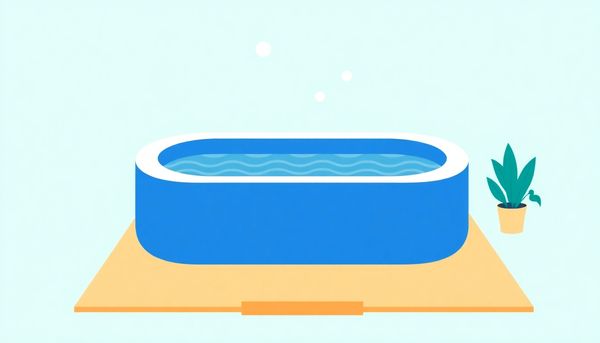
They say the devil is in the details, and when it comes to prepping your hot tub, that couldn't be more accurate. Filling and draining your tub shouldn't resemble a chaotic water park ride. Instead, it’s about precision and care, turning potential pitfalls into a breeze. First things first: before you even think about filling that tub, ensure all those important connections—drain plugs, fittings, and anything else you winterized—are snugly reconnected. It's a step often overlooked, but skipping it can lead to more than just a little splashing.
Think about the antifreeze manufacturers add during shipping to protect against cold snaps. This is the stuff of nightmares if left unchecked in your water. To clear it, you just need a simple fill and flush. Pop some fresh water into the footwell, let the pumps run for a few minutes, and then drain it out. This quick rinse ensures you’re not soaking in antifreeze soup.
Once your tub is clear of unwanted additives, freshness is key. Choose your cleaner wisely and follow the label like a trusted roadmap. Let those jets work their magic for a thorough clean, then give it another drain. This might seem repetitive, but it’s crucial for maintaining that pristine water quality. After all, a sparkling hot tub is just a step away from a perfect soak, and who wouldn’t want that?
Nothing quite compares to the sinking feeling of realizing your hot tub is still connected to power just as you're about to dive into cleaning tasks. It's like leaving your phone in the rain—except this gadget could potentially zap you. Before you channel your inner plumber and start draining that water, pause for a moment to ensure safety reigns supreme. Power and water are notorious adversaries, and you certainly don’t want them engaging in your backyard.
Start by locating your hot tub’s power source. Typically, this isn't just a simple switch next to the tub. Head to your circuit breaker and shut it down completely. It's a bit like putting your hot tub into sleep mode—nothing will disturb your work. A quick unplug of the unit adds an extra layer of security, ensuring absolutely no sneaky electricity lurks while you clean and empty the tub.
I remember when I first got my hot tub—a sleek, gleaming addition that promised relaxation galore. I almost skipped this step in excitement. A friend, more seasoned in the hot tub world, nudged me gently, reminding me of the potential peril of mixing electricity and water. It's a lesson I’ve carried with me ever since. So, before you start that drainage, make sure your tub is as electrically dormant as your lazy Sunday mornings. This small precaution guarantees peace of mind, letting you focus on the important task of refreshing your tub's interior.
Starting with a clean slate is essential for any hot tub experience, and this begins with a thorough cleaning and refill process. Whether your tub is fresh out of the box or has been collecting dust for months, a good scrub down sets the stage for safe and soothing soaks. Let's face it, soaking in murky water isn't anyone's idea of relaxation.
First, ensure any residual antifreeze — a precautionary measure from shipping — is flushed out by filling the footwell with water, running the pumps briefly, and then draining it completely. This step is key to sidestepping any unpleasant surprises later on. If your tub has been idly sitting with water, chances are bacteria have made themselves comfortable. In this case, a complete drain and clean is non-negotiable.
After the initial purge, refilling with fresh water is next. Use a reliable jet and drain cleaner for a deeper cleanse. Allow the jets to operate long enough to ensure every nook and cranny is spotless. The persistent gunk from lotions and other residues can become a nuisance, but with regular cleaning, you’ll keep your water sparkling.
Finally, double-check those winterized hot tubs. Make sure all drain plugs and fittings are securely fastened before refilling. Safety is paramount, so disconnect the power completely to avoid any shocking mishaps. With these steps, your hot tub will be primed and ready for countless hours of relaxation.
There's something about filling a hot tub with fresh water that feels like a new beginning. To ensure that this beginning is as pure as possible, using a hose filter is a game-changer. You might not think much about the water flowing from your garden hose, but it often carries impurities like minerals, metals, and calcium that can wreak havoc on your hot tub over time. Imagine finding the water mysteriously turning green or brown because of iron or copper—it's a sight no hot tub owner wants to see.
Think of a hose filter as your first line of defense. It’s a simple attachment, yet it works wonders by removing those pesky impurities right from the start. This precaution can save you from future headaches and expenses related to mineral buildup or system clogs. Once, when I skipped using a hose filter, I had to deal with stubborn white scale deposits that lined the tub's surface. Lesson learned the hard way, and I vowed never to set up my hot tub without a hose filter again.
For those who might not have a hose filter handy, placing the hose directly in the filter well offers a decent alternative. This not only provides a layer of filtration but also helps prevent air locks, which can be a nuisance to clear. By starting off with cleaner water, you're taking a crucial step towards maintaining a pristine hot tub environment, ensuring that every soak is as enjoyable as possible.
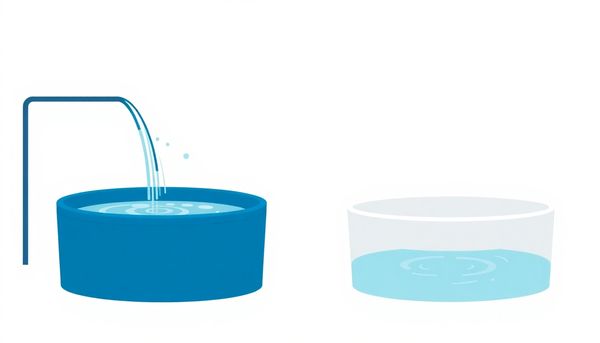
Owning a hot tub might seem like having a personal slice of paradise, but without a reliable pump, that blissful experience can quickly turn into a frustrating ordeal. The hot tub pump serves as the heart of your spa, responsible for circulating water through the filters to maintain cleanliness and for powering those luxurious jets that provide a soothing massage. Imagine a day when you turn on your hot tub and the water remains still—chances are, your pump needs attention.
In my own journey with hot tub maintenance, I learned the hard way about the importance of regularly checking and priming the pump. It was a chilly evening, and I was eagerly anticipating a warm soak, only to find that the jets were spitting spurts of water instead of delivering a steady flow. A quick look at the manual revealed that air had trapped in the lines, a common issue known as an air lock. Manually releasing the air through the bleeder valve quickly resolved the issue, allowing for a seamless and enjoyable soak.
Regular maintenance of your hot tub pump, including priming and checking for blockages, is essential to avoid such mishaps. Pay close attention to the manufacturer’s instructions, as prime methods can vary between models. By ensuring your pump is in top condition, you’re not just preserving the life of your hot tub; you’re also guaranteeing yourself countless evenings of uninterrupted relaxation.
A hot tub is a wonderful retreat, but ensuring its optimal performance involves understanding a few key maintenance tasks. One of these tasks is priming the hot tub pump, an essential step to avoid any hiccups in your spa experience. The pump is the heart of your hot tub’s circulation system, which means ensuring it's working smoothly is crucial.
Every hot tub’s pump system might be slightly different, so your first stop should always be the user manual. Some modern hot tubs come equipped with a self-priming feature. If yours is one of these, you’re in luck; a quick setting on the control panel can handle the task for you. But if manual priming is the route you must take, it’s straightforward as well. Locate the bleeder valve, usually found on the pump itself. This small but mighty component is your ally in releasing trapped air. Gently open it until you hear the hissing sound of air escaping, then close it once a steady stream of water flows out.
It's common to encounter an air lock—where air pockets prevent water from flowing efficiently through the jets. If this happens, it can be disconcerting, but fear not. With a simple adjustment of the bleeder valve, you can restore your hot tub to its bubbling glory. Once everything's running smoothly, you're ready to move on to adding those all-important start-up chemicals, setting the stage for the perfect soak.
Working with a hot tub is like having a mini oasis right in your backyard, but achieving that requires a bit of elbow grease. Keeping your tub clean is crucial for both your enjoyment and your health. Start by tackling any antifreeze that may have been left during shipping. To do this, fill the footwell with water, run the pumps for several minutes, and then drain the tub. This step ensures any unwanted chemicals are flushed out, leaving your plumbing pristine and ready for use.
Next, if your hot tub has been sitting idle for a while, it's vital to refresh its environment. Drain the old water to prevent any bacterial growth that might have crept in over time. A thorough rinse with a jet and drain cleaner will do wonders for maintaining a hygienic soak. Follow the cleaner’s instructions meticulously—the goal is to have those jets gleaming and the drains functioning optimally.
After you've tackled the plumbing, don't overlook the shell and cover. These surfaces deserve a gentle touch; use a non-abrasive cleaner and a soft cloth to avoid scratching. Rinse thoroughly to dodge any future foamy surprises. For those persistent stains or stubborn grime, a deep clean might be in order, ensuring your hot tub is as fresh as a daisy. Remember, a clean tub is just as important as the water chemistry itself.
Ensuring the right water chemistry in your hot tub is akin to mastering a balancing act. It isn't merely about adding a splash of this and a sprinkle of that; it's about creating an environment where relaxation meets safety. A friend once told me about their early days of hot tub ownership. They added chemicals on a whim, resulting in water that left their skin dry and irritated. This only emphasized the importance of doing things correctly from the get-go.
Begin with a testing kit to analyze your water's pH, alkalinity, and sanitizer levels. These readings are the backbone of water chemistry. Ideally, your pH should hover between 7.2 and 7.8, with alkalinity ranging from 80 to 120 parts per million. Keeping these levels in check prevents corrosion of your tub’s components and ensures a pleasant soaking experience. If the pH is too high, add a pH reducer; if it's too low, a pH increaser will do the trick.
Once your pH and alkalinity are balanced, turn your attention to sanitization. Chlorine or bromine tablets are popular choices, each with its own set of benefits. Chlorine is typically faster in action, while bromine maintains its effectiveness over wider pH ranges. Regularly check sanitizer levels to keep bacteria at bay.
Remember, maintaining water chemistry isn't a one-time task. Regular testing and adjustments are crucial, much like nurturing a plant. With consistency, your hot tub will be a haven of cleanliness and comfort, inviting you in for a worry-free soak.

Swapping out old filters for fresh ones in your hot tub is akin to changing the air filter in your car—small effort, big impact. Filters are your first line of defense against dirt and debris, and ensuring they’re clean is crucial for maintaining pristine water. Begin by locating the filter compartment, typically found near the pump. It’s straightforward, but if it's your first time, your owner's manual is your best friend for precise guidance.
Upon opening the compartment, remove the existing filter cartridges. Give them a thorough inspection for any wear and tear. Even if they seem moderately clean, consider a deep cleanse. A reliable method involves soaking them in a dedicated filter cleaning solution overnight. This not only removes grime but also revitalizes the filtration capacity. However, if any signs of cracking or damage appear, it's time to invest in replacements.
Once your filters are either clean or newly purchased, place them back into their respective slots. Make sure they’re seated properly to ensure the water flows through them efficiently. Throughout the installation, it’s essential to handle the cartridges with care to avoid any accidental damage. For an added layer of protection, opt for a hose filter while refilling your tub. This can help prevent minerals and metals from sneaking into your system. By ensuring your filters are fresh, you set the stage for a luxurious hot tub experience with water that's as clear as a mountain spring.
After a long hiatus or when breaking in a new hot tub, the first step to a rejuvenating soak is ensuring the tub itself is pristine. Starting with cleaning the tub isn’t just about aesthetics; it’s a crucial aspect of hygiene and maintenance. A friend of mine once ignored this initial step, eager to jump in, and ended up with murky water and a slew of issues they hadn’t bargained for. Trust me, you don't want to make that mistake.
Before you even think about bringing out the bubbles, disconnect all power to your hot tub. This removes any risk of accidental shocks or more serious electrical mishaps. Once safely unplugged, focus your attention on the shell of the hot tub. Using a non-abrasive cleaner and a soft cloth, gently scrub away any dirt or grime that’s accumulated. Be thorough, especially in the corners and around the jets, where debris tends to hide.
Next, pay attention to the filters. These are the unsung heroes of your hot tub, working tirelessly to keep the water clean. Remove the filters and give them a good rinse. If they're extra grimy, an overnight soak in a filter cleaning solution will do wonders. If the filters are beyond saving, replace them to ensure optimal water quality and circulation.
Once the tub is sparkling and the filters are in good shape, it's time to rinse and drain any cleaning residue left behind. It might seem tedious, but these steps lay the foundation for a refreshing, hassle-free hot tub experience.
Navigating the watery world of hot tubs requires a touch of finesse, especially when it comes to ensuring proper water circulation. The subtle dance of jets and pumps is not just about maintaining a soothing whirlpool; it's the lifeline of your hot tub's ecosystem. A few years back, a friend of mine learned this the hard way. The relaxing evening planned under the stars turned into a frustrating affair when the jets sputtered weakly, unable to deliver the bubbly embrace they promised. This was a clear sign of poor water circulation.
To avoid such hiccups, begin by checking the water level. It should hover about an inch below the headrests. This optimal level ensures the jets are fully submerged, allowing them to perform at their peak. Next, focus on the filter. A clean, well-maintained filter is critical for smooth water flow. If you haven't already, consider soaking your filters in a deep-cleaning solution; they deserve a spa day, too!
Once the filters are in tip-top shape, it's time to give your pump some attention. Consult your manual to see if your system requires priming. Many modern hot tubs boast a self-priming feature, sparing you the task. However, if yours doesn't, manually releasing air through the bleed valve will do the trick. With these steps, you'll ensure that your hot tub's water circulation is as flawless as a finely tuned symphony, promising endless hours of relaxation.
Filters act like the unsung heroes of your hot tub, quietly ensuring that every dip you take is in clean, clear water. Before you get too eager to hop in, take a moment to give these essential components the attention they deserve. First, retrieve the filter cartridges from their usual spots. Their appearance will tell you a lot—if they’re visibly worn or have stubborn grime, it’s time to replace them. Fresh filters not only enhance water quality but also improve the efficiency of your tub.
For those filters that appear just a bit dusty, a deep clean might suffice. Grab a hose and filter cleaner, and give them a thorough rinse. For stubborn dirt, a chemical soak overnight in a dedicated solution can work wonders. I found that my own filters often looked deceptively clean but performed so much better after a good soak. Once squeaky clean, inspect them one more time for any hidden wear and tear before placing them back.
Using a hose filter when refilling can prevent mineral buildup and extend the life of your filters. It’s like giving your hot tub a fresh start every time you fill it. By keeping your filters in top condition, you’re not just maintaining your hot tub—you’re ensuring that each soak is as delightful as the last. After all, clean water is the backbone of a relaxing spa experience.
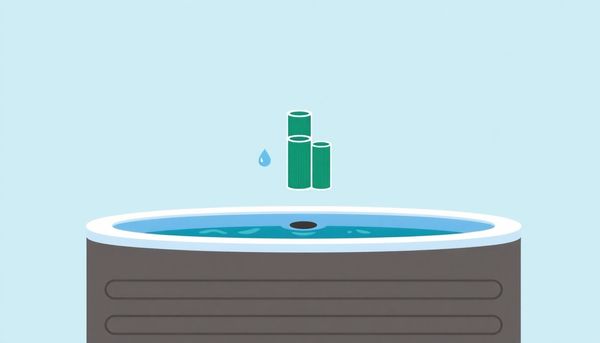
No one ever really mentions the chemistry lessons that come with owning a hot tub. But here we are, diving into the fascinating world of start-up chemicals. If you’re feeling a bit like a mad scientist, don't worry—you're not alone. Pouring, measuring, and mixing might bring back memories of high school science labs, but this step is crucial for ensuring that your hot tub remains a haven of relaxation rather than a breeding ground for bacteria.
Start by having your hot tub reach a cozy 80ºF (30ºC). Once it's comfortably warm, you'll add your start-up chemicals. Begin with a sanitizer like chlorine or bromine to keep the water clean and clear. If you've never done this before, follow the manufacturer's guidelines or consult a comprehensive guide on hot tub chemicals.
The next step is balancing your pH levels. Your goal is a range between 7.4 and 7.6. If your pH is too high or low, it can lead to issues such as skin irritation or damage to the hot tub itself. An alkalinity increaser or decreaser might be needed to stabilize the pH levels.
Before you sit back and let the magic happen, don’t forget to run the jets on low for at least 20 minutes. This allows the chemicals to mix thoroughly and ensures that every drop of water in your tub is equally treated. Remember, patience and precision are your best friends in turning your hot tub into a beacon of relaxation.
Waterlogged dreams can turn into slippery nightmares without proper drainage and cleaning. After a period of dormancy or when welcoming a new hot tub into your life, clearing out any stagnant water is crucial. Picture this: your hot tub arrives with a hidden surprise—antifreeze. It's a necessary evil used to protect the plumbing during cold transports, but certainly not something you'd want to indulge in. Start by filling the footwell with water, run the pumps briefly, and let the water drain out, taking the antifreeze with it.
For those who've neglected their spa for a while, a deep dive into drainage and cleaning becomes non-negotiable. Leaving water to stagnate invites unwanted bacteria to set up camp. Drain the tub completely, then engage a jet and drain cleaner to banish any lurking residues. Allow the jets to run their course, ensuring every nook is scrubbed clean.
Once the unwanted guests are evicted, refill the tub with fresh water. This isn't just about cleanliness; it's about maintaining the integrity of your relaxation sanctuary. Refill with an eye on quality—use a hose filter to keep impurities at bay. Remember, before any water refills and cleaning, disconnect all power sources. Electricity and water are a volatile mix, and nothing ruins a soak faster than an unexpected shock.
In the end, a sparkling clean hot tub isn't just visually appealing—it’s your ticket to worry-free soaking. Proper drainage and thorough cleaning lay the groundwork for a blissful, safe spa experience.
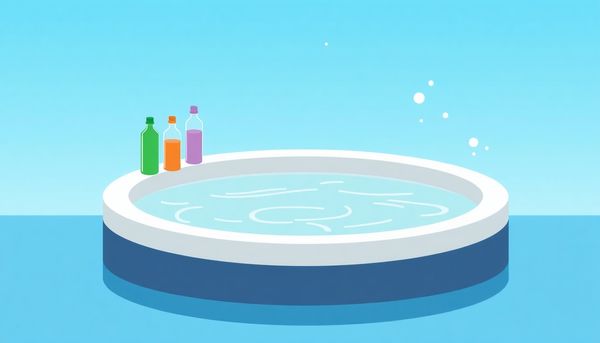
This article provided insights into maintaining your pool. Start your pool care journey today!
Want to become a pool maintenance expert? Our free Pool School course covers everything you need to know about pool care. From basic maintenance to advanced troubleshooting, you'll learn how to:
Join over 10,000 pool owners who have already transformed their pool care routine. Get started with our free Pool School course today!